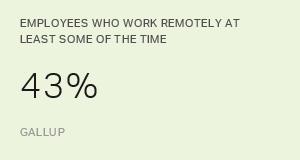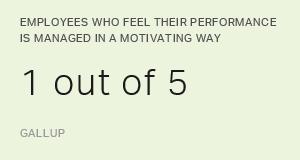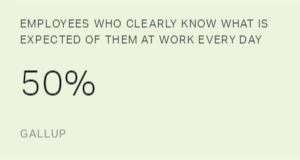Do you know what's expected of you at work? One of the most startling findings I've seen over the years is that only about half of employees strongly indicate that they do.
We recently reviewed data from 550 organizations and 2.2 million employees during their first companywide measurement of employee engagement. Even more surprising than the above finding is that the managers of these employees are equally unclear on what is expected of them. And while there is some variance across industries and job types, teams within organizations vary the most.
How is this possible, you might ask, in a business world of increased focus on job descriptions and competency models that outline the tasks and behaviors necessary for each role?
In our worldwide study of great managers, we've learned that clarity of expectations is more than a job description. Rather, it is a detailed understanding of how each person's role relates to the roles of his or her coworkers and the overall organization -- and how expectations change as circumstances change. What's more, clear expectations are central to fair and useful performance management.
As one high-performing manager said, "Performance evaluations should not be a surprise. If they (employees) don't know where they stand before that meeting, there is a big problem. One of the two hasn't been doing their job -- probably the manager."
Many large organizations have experienced the dysfunction of once-a-year performance conversations, known as performance appraisals, and have publicly stated that they're quickly running away from this traditional process. Global titans, including General Electric and others, made headlines this summer when they announced they were scrapping annual reviews.
But as companies are running toward a new solution, they should make sure they run toward clarity and not confusion. Moving to more frequent developmental conversations and ongoing dialogue is certainly an improvement, and is consistent with the behavior of the most successful managers Gallup has studied. But getting it right isn't just about the activity of ongoing conversations. It is about what happens during those conversations and the relationship between the manager and the employee.
Clarity of expectations is statistically linked to many important organizational outcomes.
Getting expectations right relates to better customer perceptions of service quality, productivity, retention of employees and safety. Substantial gains in clarity of expectations connect to productivity gains of 5% to 10%, and link to 10% to 20% fewer safety incidents, for example.
Getting expectations wrong means all of the hard work that's done in organizations, from hiring to development to mission statements, may be to no avail.
If people hesitate on expectations, everything else in the organization becomes less efficient and effective. And expectations may be one of the single most important elements to pay attention to as organizations rethink their performance management systems, because ongoing conversations, assuming they happen, provide no value-added guarantees.
On the surface, it seems elementary: Just be clear in delegating to your employees what needs to be done. But people aren't that simple. They want to know their work is important. They often have insights that can improve how efficiently things get done. And they want to be involved in thinking about their own progress and future. These things relate to whether there is effective translation of organizational objectives to appropriate individual execution. Effective expectation setting is a two-way exchange. Our investigation of this element over the past two decades suggests some core principles that serve as guides to clear expectations:
- Clear and meaningful organizational objectives. Gallup research indicates that while it's necessary for executives to clearly communicate overall objectives to the entire organization, it's also essential for direct managers to discuss those objectives in the context of each employee's work responsibilities.
- Knowing the strengths of the individual. Knowing and developing the strengths of each individual means teams can partner together more effectively and expectations can be fine-tuned to advance both the organization and the individual.
- Involving the individual in setting challenging goals. Employee goals should link with the company's overall business objectives. Great managers give their team members as much ownership as possible in setting those goals. Simply put, large-scale studies indicate it's better to set challenging expectations based on how the individual can contribute and progress than to have a general approach that forces all individuals into the same model of peer-to-peer comparison.
- Ongoing conversations. Gallup's recent State of the American Manager report noted that only 12% of employees strongly agree that their manager helps them set work priorities, and just 13% strongly agree that their manager helps them set performance goals. Highly engaged employees want ongoing feedback, and they want to be held accountable.
High-performing managers check in with employees on a regular basis (as often as weekly or daily, depending on the job) and formally discuss progress and development semiannually. If the conversations are primarily strengths-based and useful to the employee's development, Gallup research indicates they are more likely to engage than disengage employees. The ongoing conversations enable the manager and employee to discuss work in the context of changing organizational objectives and, where necessary, reframe expectations based on the ongoing needs of the business and customers.
While science can inform us about the important guiding principles of performance management, setting clear expectations is an art that considers the organization's objectives, the individual's goals and strengths, and continual refinement in real time based on the evolution of business needs.


